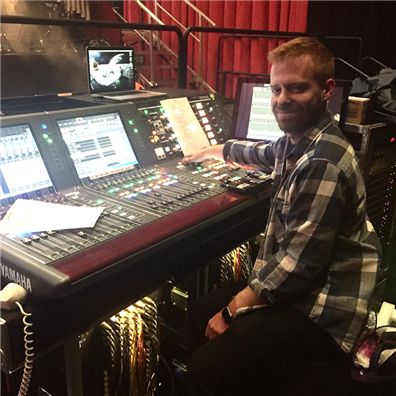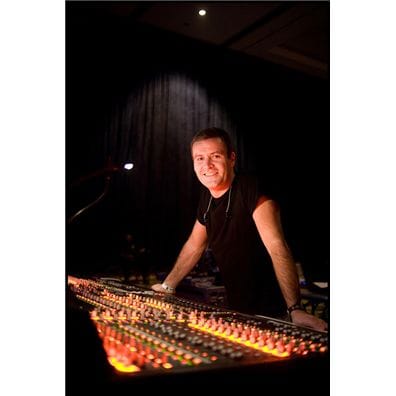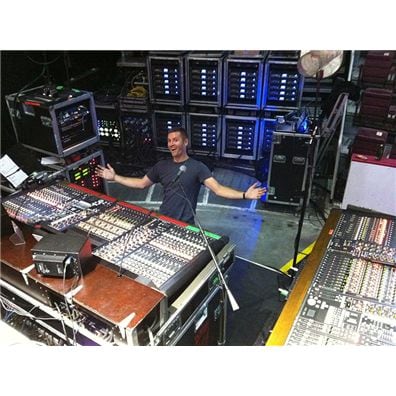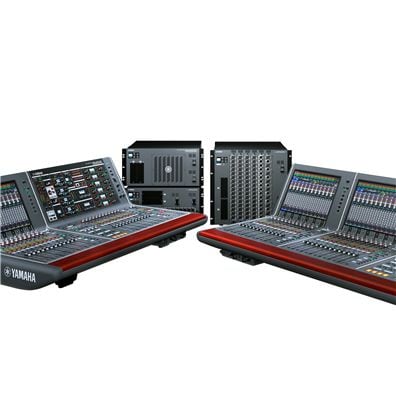Dual Yamaha PM10s for Manilow Tour
Monitor Engineers for Barry Manilow Mixing on Two RIVAGE PM10s

Barry Manilow is back on the road in support of his new record “This Is My Town” Songs of New York. Engineer Will Miller has chosen a Yamaha RIVAGE PM10 Digital Audio Console for mixing Manilow’s monitors. Cameron Manes is using a second PM10 for the band’s monitor mix. Hi-Tech Audio (Hayward, CA) provided the dual PM10s to Delicate Productions (Camarillo, CA) who is handling production for the tour.
A long-time Yamaha digital console user, Will Miller has been mixing Manilow’s monitors for five years. “I've been using Yamaha large format desks almost exclusively since 2004 when I took out a PM1D with Maryland Sound for Josh Groban's first world tour, states Miller. From the very beginning, I found them very adaptable to mixing monitors and have always loved the "one knob, one function" aspect of the 1D surface. I've also always loved the massive amount of faders available on the surface. On that first Groban tour, we were already above 96 inputs and probably in the 40 sends’ range in terms of monitors, so I maxed them out right from the beginning. For Josh's second tour I was up to a PM1D with a PM5D as a sub-mixing sidecar, and for the last run I did with him, I was all the way up to a pair of cascaded PM1Ds (we had 17 musicians on two stages, all with stereo IEMs, plus wedges, tech mixes, etc. I ended up at 132 inputs and 56 mixes when the tour ended).
Miller said he always gravitated towards PM5Ds for one offs because they are available, reliable, and familiar. “I've used 5Ds on other tours that didn't have the massive ins and outs of a Groban or Manilow show. After 15 years on almost nothing else, there's still no desk I can move around on with the confidence I had on a PM1D. Plus, they still really do sound good.”
Miller says he has a sense of the sound Manilow prefers. “It's not an obvious mix, but once you know what works, you keep at it. My main concern with switching consoles was always going to be making the transition seamless for him. I don't want Barry to give up any of his time in rehearsal to work on his monitor sound. Obviously, sticking with Yamaha was a given; not that I have any desire to stray anyway, but it was paramount that the new PM10 console be able to replicate the sound Barry was used to.”
“To this end, Miller notes, by far the most reassuring parts of the PM10 were all the "Legacy" EQs, compressors, and effects. I know at some point I will really delve into all the cool options that are built into each channel and the system, but for the time being, it was very important to copy EQ curves and reverb settings that work for Barry’s sound, and having the ability to precisely replicate what I was doing on the PM1D was incredibly reassuring.”
The most useful feature Miller said, for him, are all the custom fader banks. “In the past, I was very meticulous about laying out my input list so that channels land in logical groupings on the surface itself. I never understood having all your effects clustered at one end of a console. It makes no sense from a workflow perspective. As such, my drum reverb lands right after my drum channels, my guitar reverb lands after my guitar channels, and so on. Before, that meant lots of odd patching, but now on the RIVAGE PM10, I can just group with custom fader banks in a way that is logical to me and leave the patch however it is physically most convenient. Having the ability to name the banks makes finding things so much simpler. Typically about a week into a tour, I would have a layout memorized so I could grab things instantly, but the PM10 custom faders make this nearly a non-issue.”
Miller said he wasn't always a fan of the multi-function silver knobs on other manufacturers' consoles. “I have to say, though, the Yamaha PM10 layout functions so well with the screen layout; it's really impressive. With the 1D, 5D, 01V, and 03D, I was a real jog wheel junkie. I liked making adjustments there. But the way the silver knobs line up on the PM10 with their associated parameter above, really just makes sense. And, the "Touch and Turn" knob has become the jog wheel for the new millennium. I thought I'd miss the track pad, but after about an hour, I really embraced the touch screen.”
The best part about the 1D was always the sheer number of faders available to monitor engineers. “Whenever I've had a star/band situation, I almost always mixed the star-post, band-pre, so I could take advantage of VCAs (or DCAs as the case may be). Having 48 faders available on the PM10 makes this much simpler. It's not an issue for me now as I'm only mixing for Barry, but I think the custom faders will go a LONG way, making fewer faders less of an issue for situations like that.”
Photos
Related Products
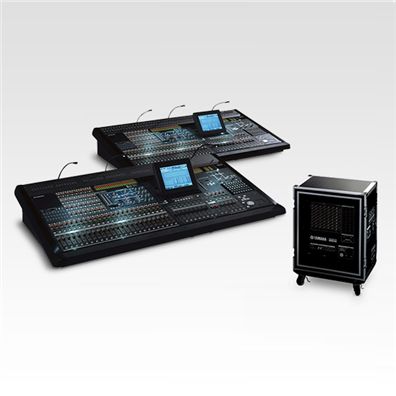
PM5D Tidak Dilanjutkan
Pilihan yang kuat untuk suara live skala sedang dan besar, PM5D tersedia dalam bentuk konsol sendiri atau sebagai kapasitas ganda sistem PM5D-EX dengan fitur konsol tambahan DSP5D Digital Mixing System.

